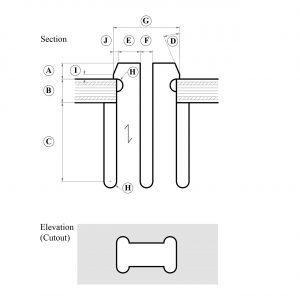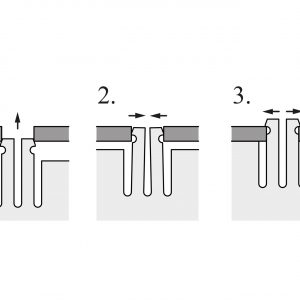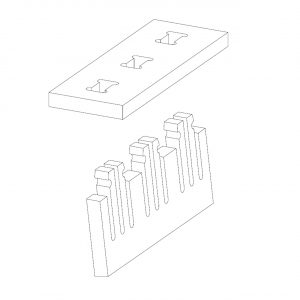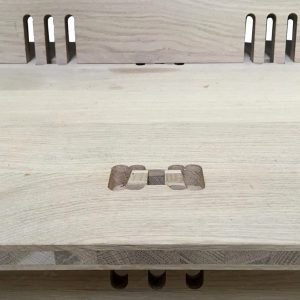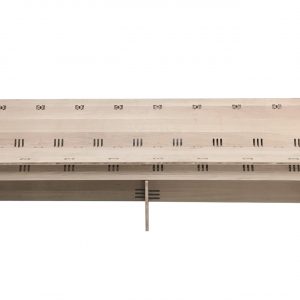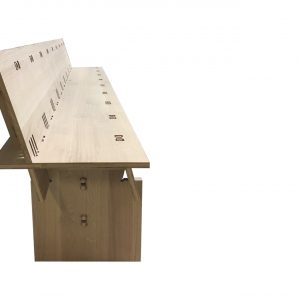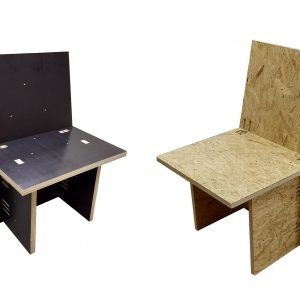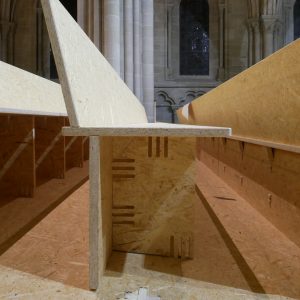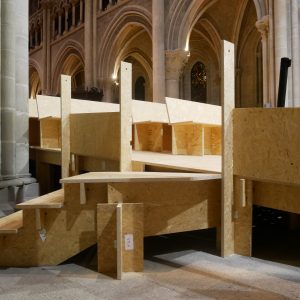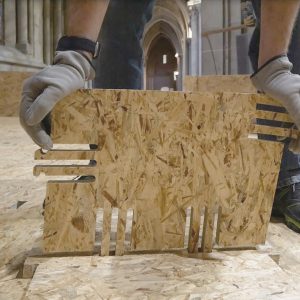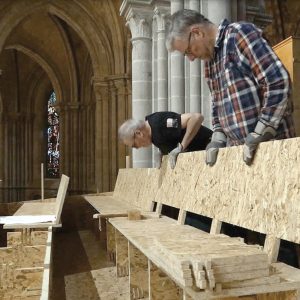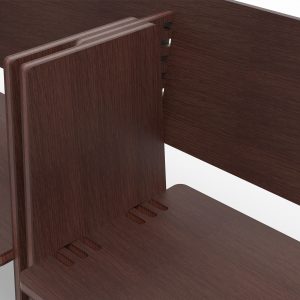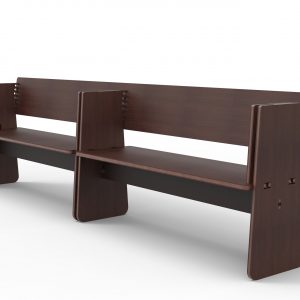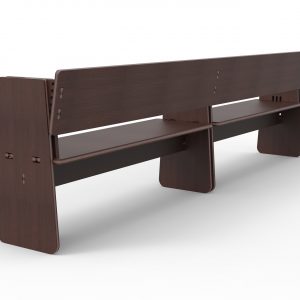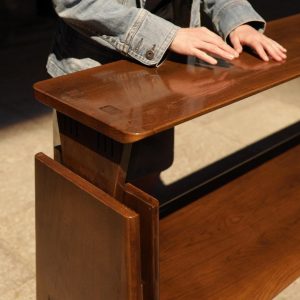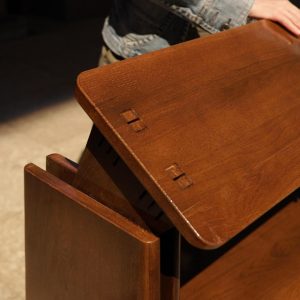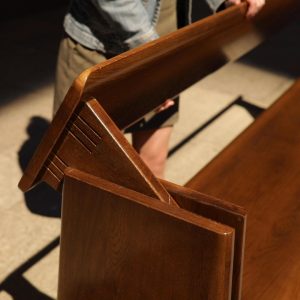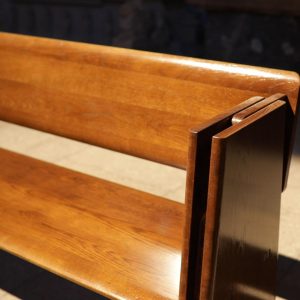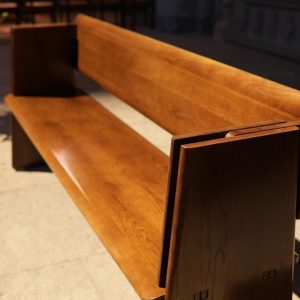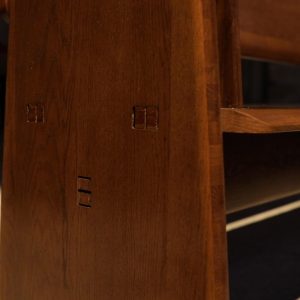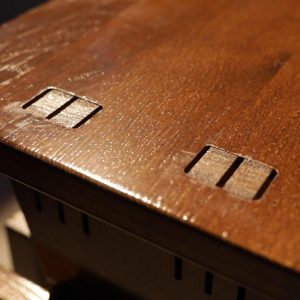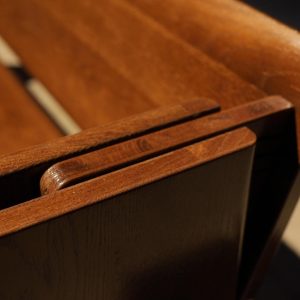Benches, Lausanne Cathedral
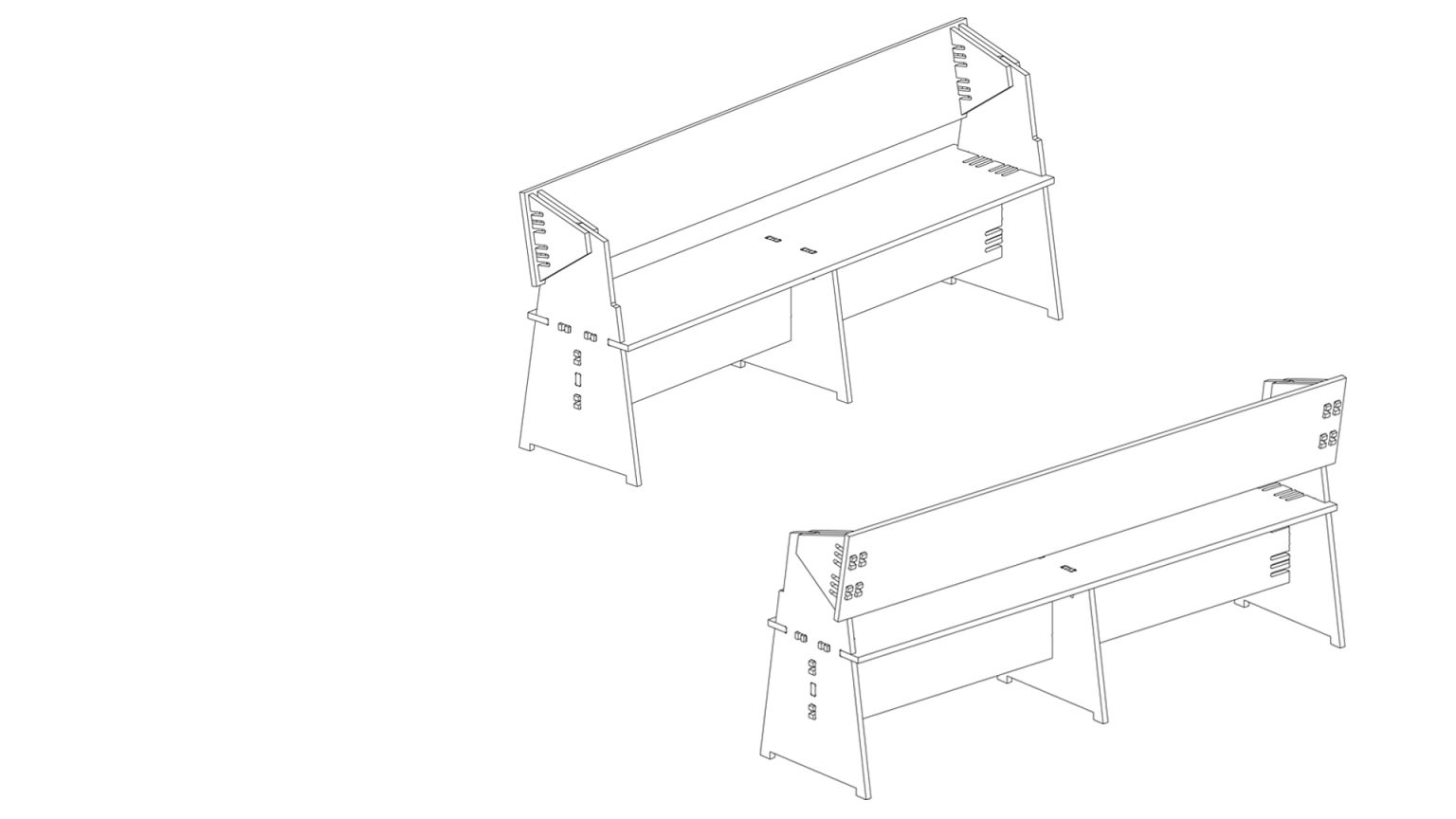
Benches prototype © IBOIS 2020 image : Jamani Caillet (Mediacom)
RESEARCH
In 2014, IBOIS laboratory presented at the Acadia 2014 Design Agency conference in Los Angeles a model of clipped wooden joint. By exploring the elastic properties of wood, the laboratory has developed a new male and female plug system, which once nested (or “clipped”) are able to hold two pieces of wood together without adding glue or metal. There is many opportunities and advantages for this system to be used in construction fields. If this principle started to be used, it could simplify the implementation, shorten the assembly time and reduce its cost.
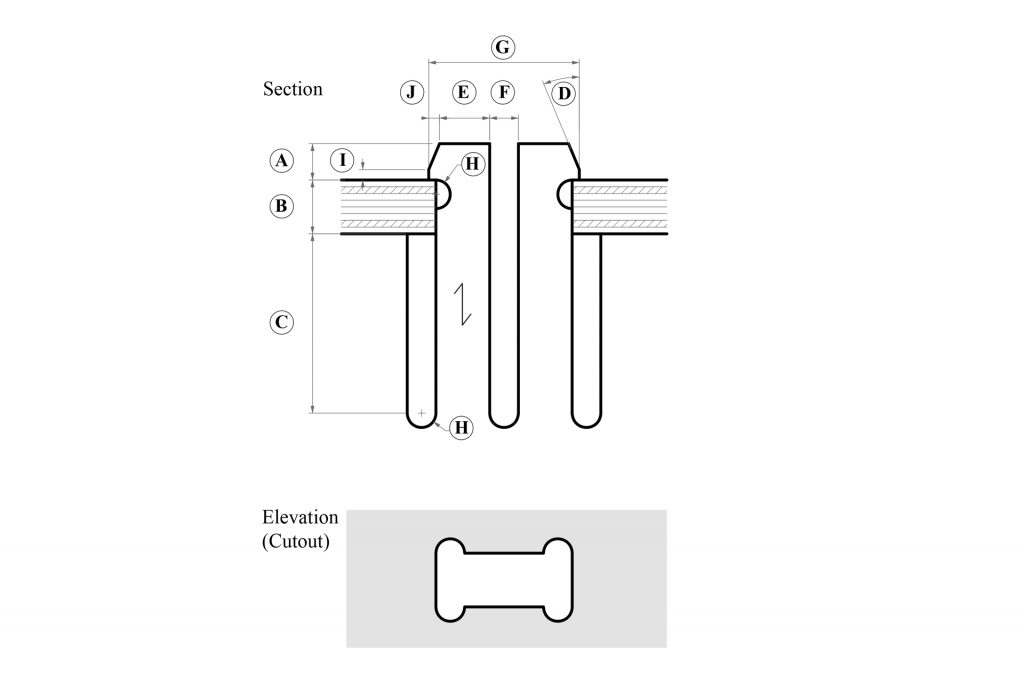
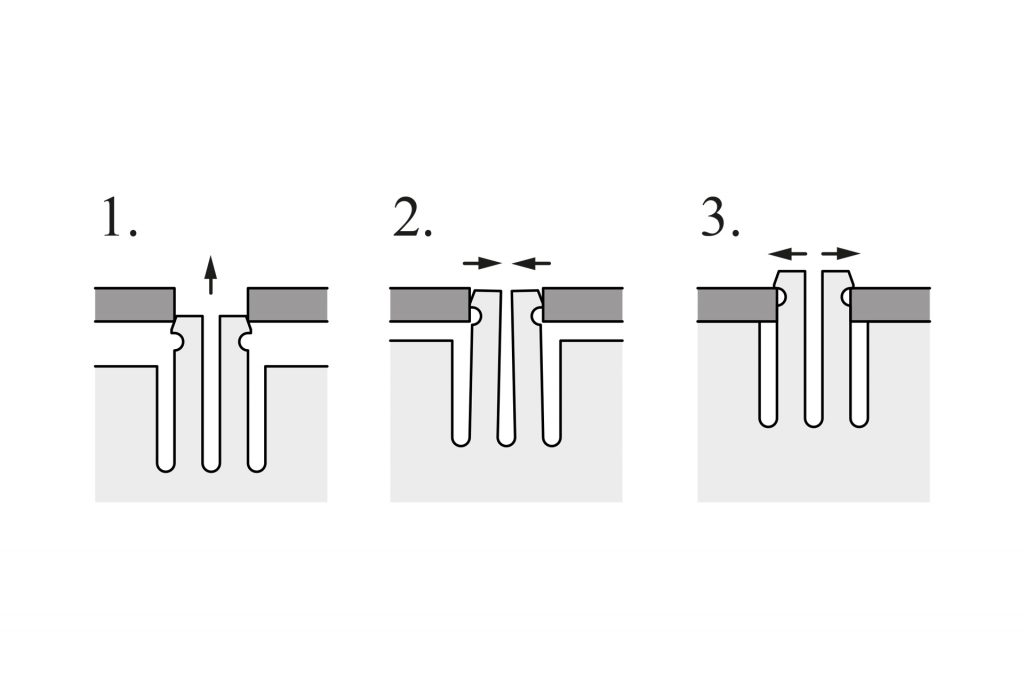
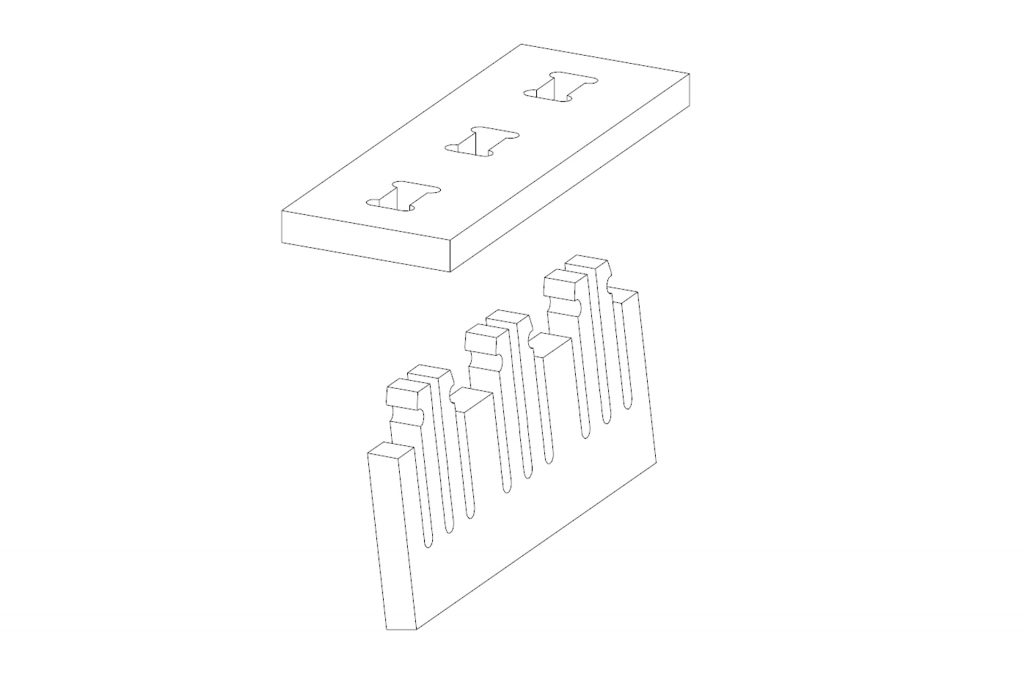
The snap-fit joint consists of one male (hook) and one female part. The temporary bending of the cantilever hook allows the fit of two pieces, using the material’s elasticity property. After the joining operation, the pieces return to a stress-free state. During the joining operation, the hook will be bent. This implies bending moment at the base of the cantilever and a deflection force against the mating panel. For a given undercut, the length and height of the cantilever have been chosen to limit the strain at the base in its elastic range and to avoid the crushing of the fibers at the tip of the hook and the top layer of the mating part, due to the deflection force. The geometrical parameters of the parts define the force needed to assemble or disassemble it and the separable or inseparable characters of the joints.
Nabucco, 2018
In November 2018, the Lausanne Cathedral has hosted four (+ 2 additionnals) representations of Nabucco’s opera. For that specific event, IBOIS has developed a new wooden scenography (see related article), showing a technology transfer of the snap-fit joints. The scenography includes benches and bleachers for spectators. Those benches are all in wood panels, assembled together thanks to a combination of snap-fit joints and mortise and tenon joints, for about 740 spectators at each representation.
While Snap-fit joints can resist a certain retention force, they do not provide any shear resistance. In order to use this joint as a load-bearing connection for building components, snap-fit joints are combined with prismatic tab-and-slot joints, which receive the majority of the forces.
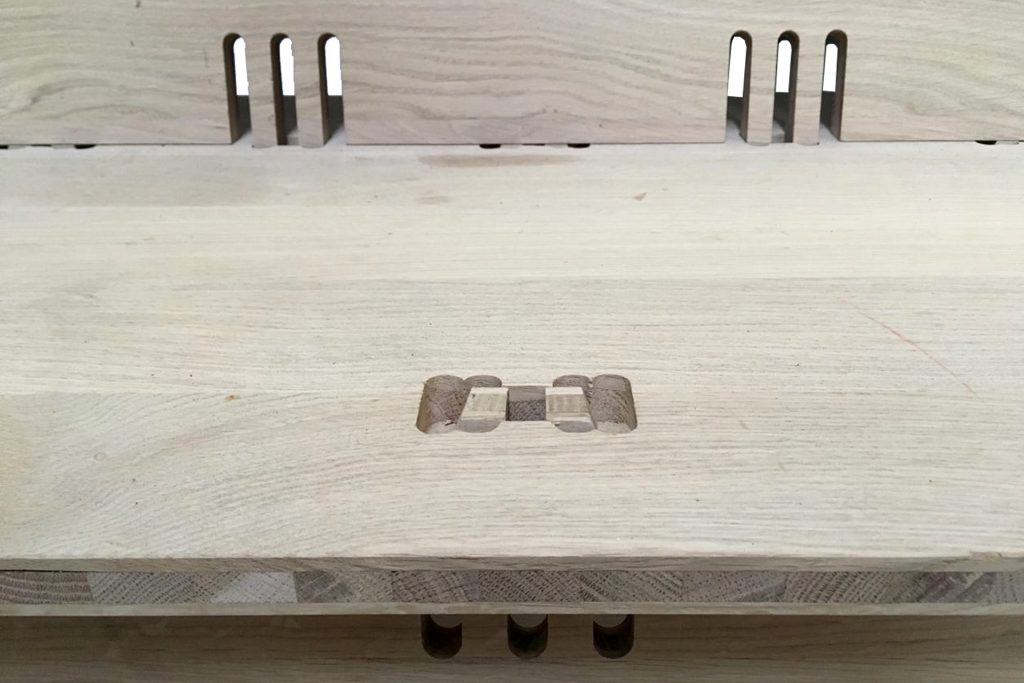
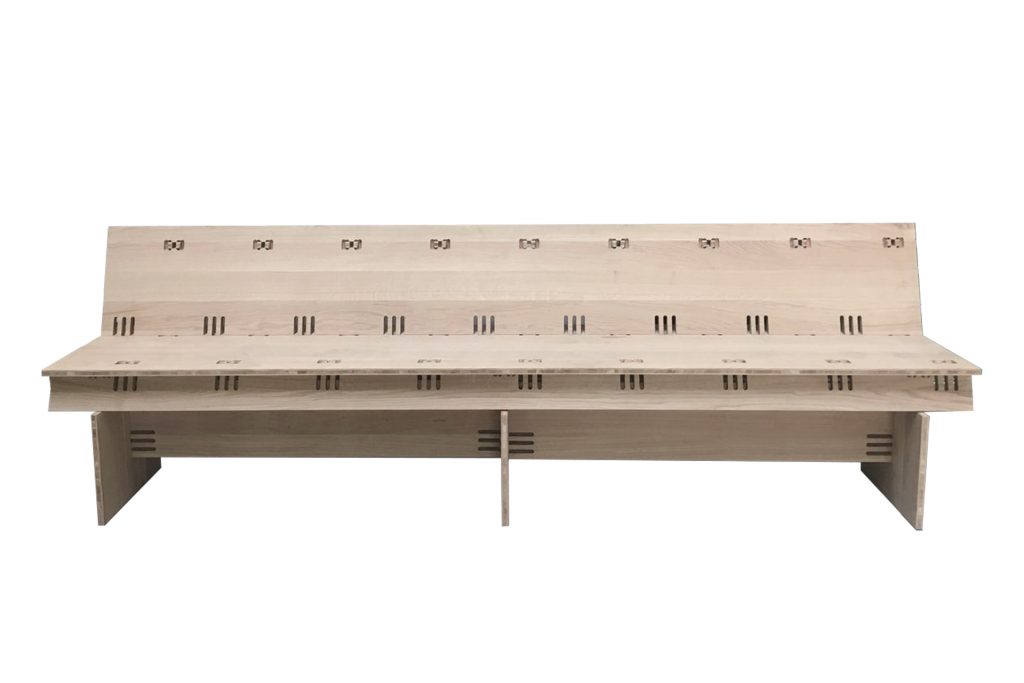
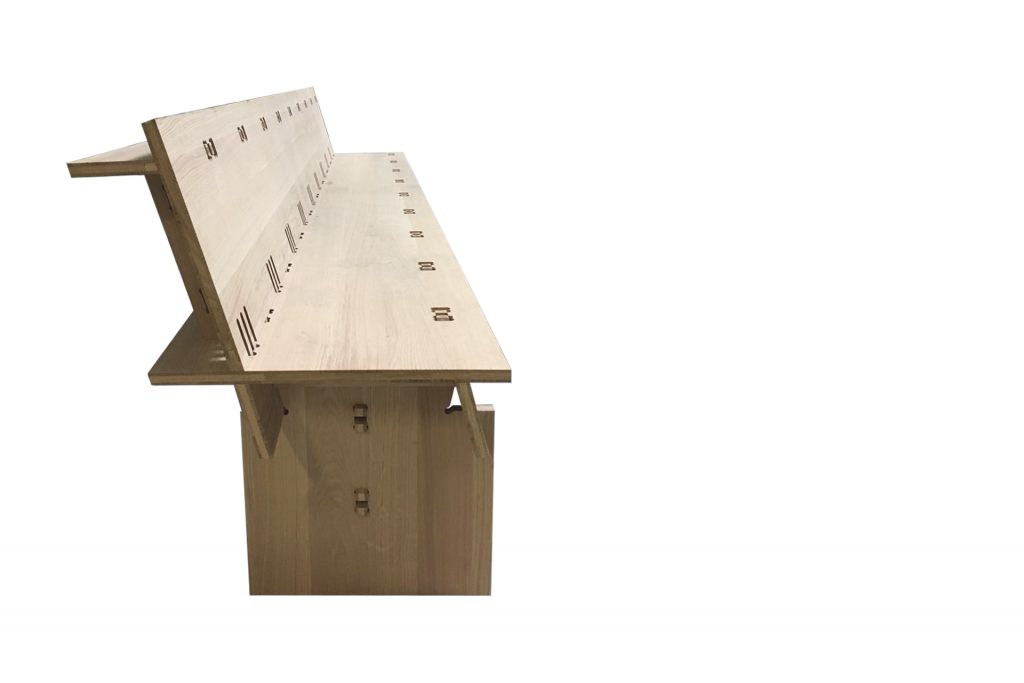
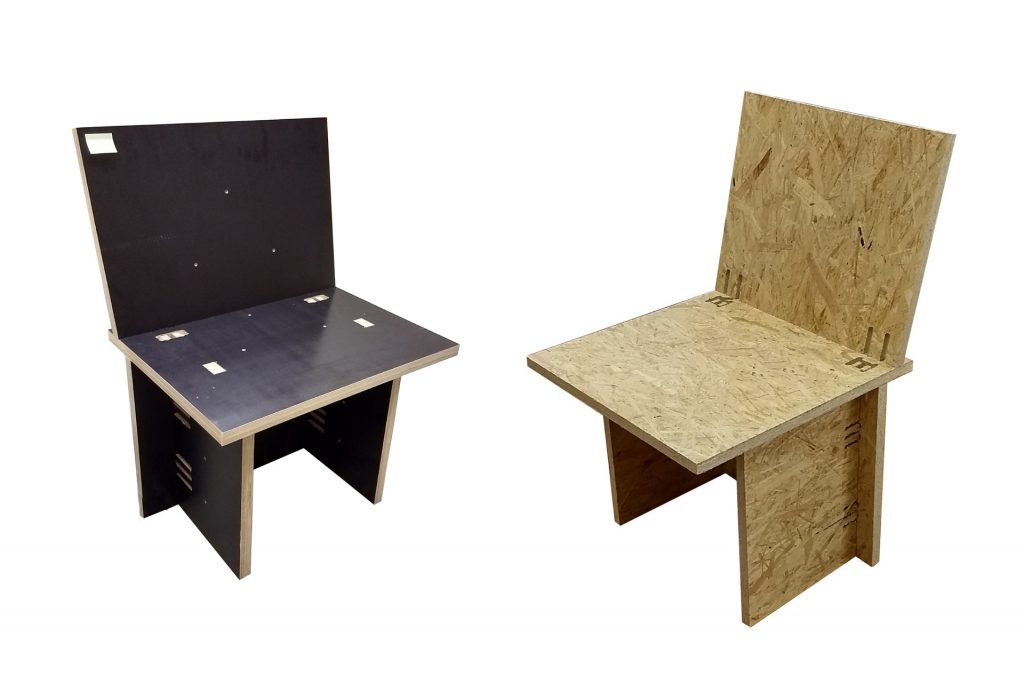
The assemblage of the bench panels does not require specific tools nor any additional material such as glue or metal assemblies. This combination of integrated joints achieves a mechanical behavior equivalent to a screwed joint. Also the elements (pre-fabricated wood panels) can be transported to the construction site flat-packed and put together on site. This reduces the necessary transportation volume. Moreover, they can be quickly put together or disassembled if needed. Finally, the snap-fit connection is a mono-material connection, including advantages such as aesthetics, ease-of recycling or a homogenous thermal conductivity of the parts, which can reduce condensation and decay.
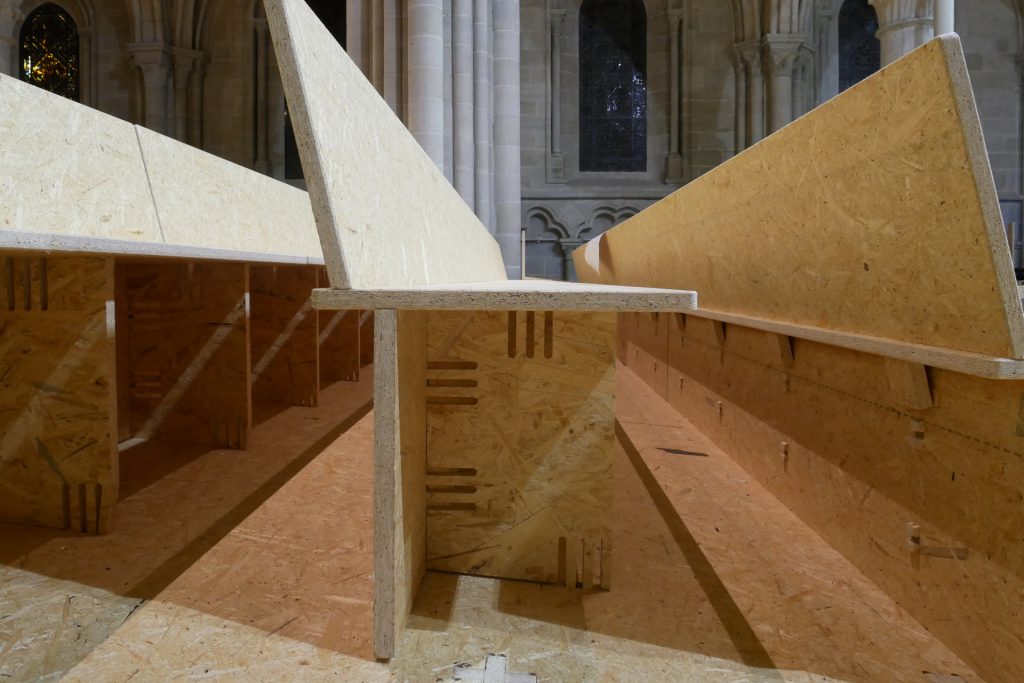
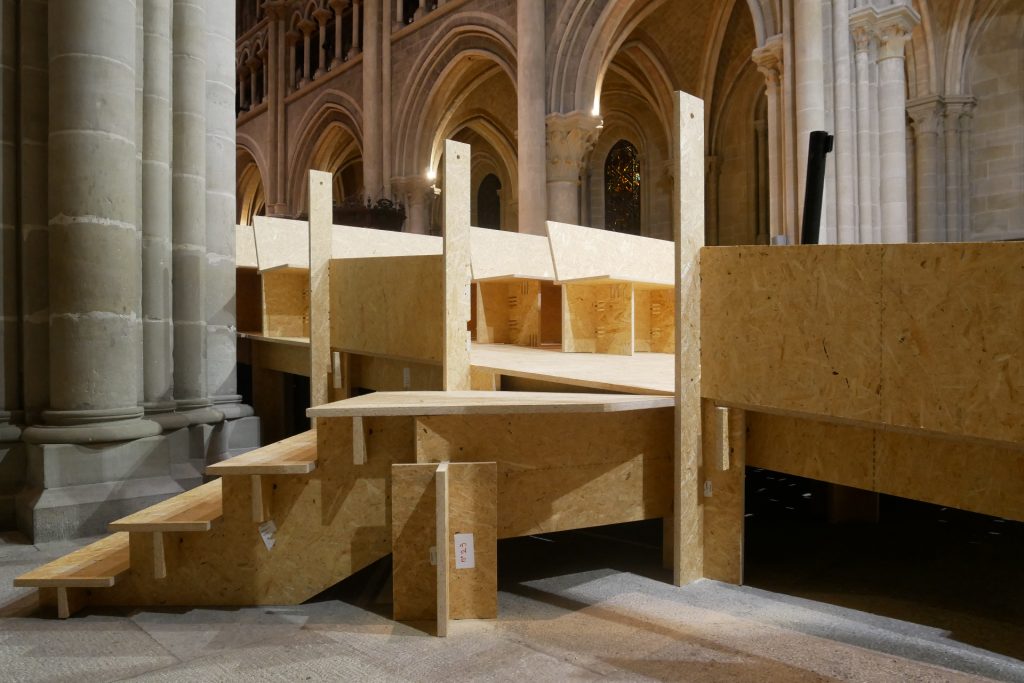
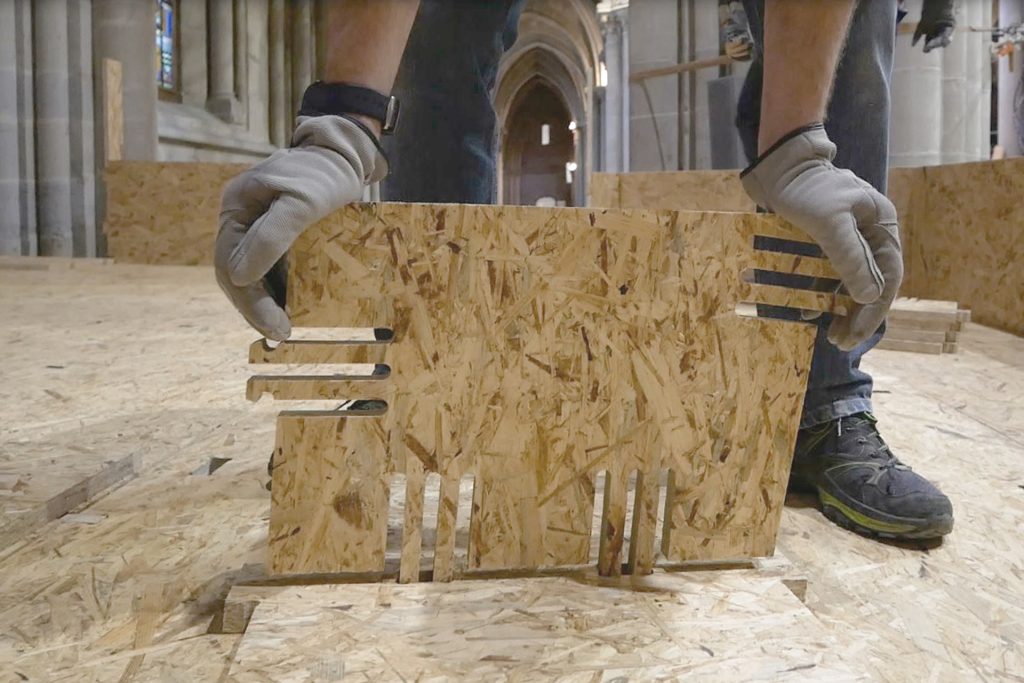
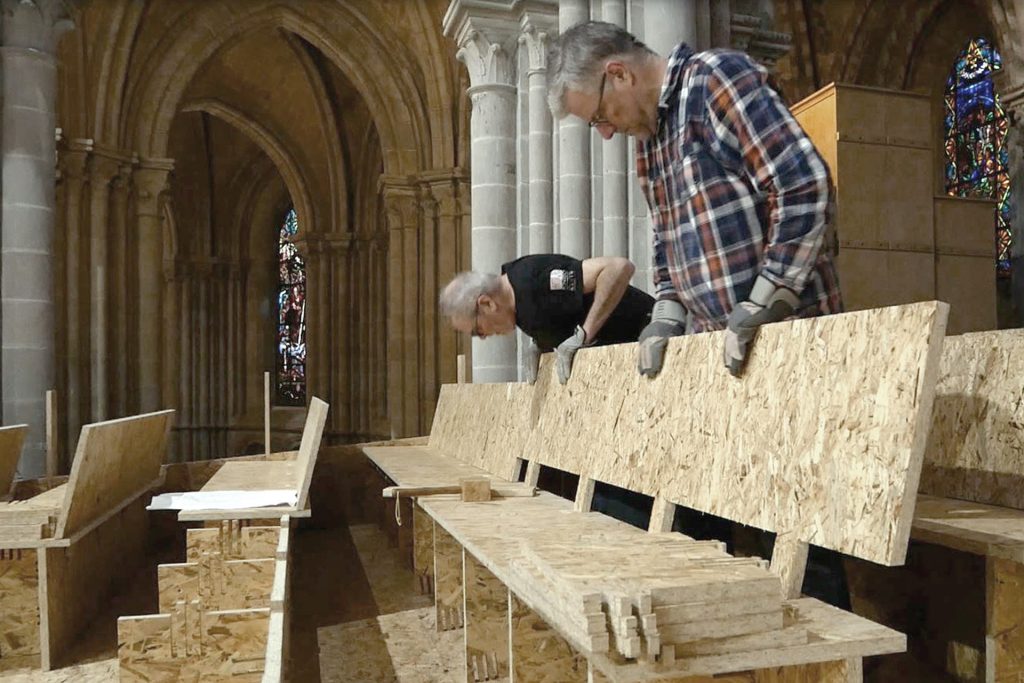
New pews for the cathedral, 2022
Following this first project for Lausanne Cathedral, the Canton de Vaud established a technology transfer partnership with the Ibois laboratory for the creation of new benches. As with those created for Nabucco, the benches are to be removable, so the design is based on the same concept.
While the first benches were made from OSB, the new ones are made from three-ply oak panels, varying in thickness between 20 and 26 mm, which are uniform in appearance and highly resistant. A computer numerical control (CNC) wood router, with an accuracy of 0.01 mm, was used to mill the parts. The wood was sourced from Canton-owned forests in Concise, Etagnières and Cossonay, thus promoting local manufacture and short supply chains.
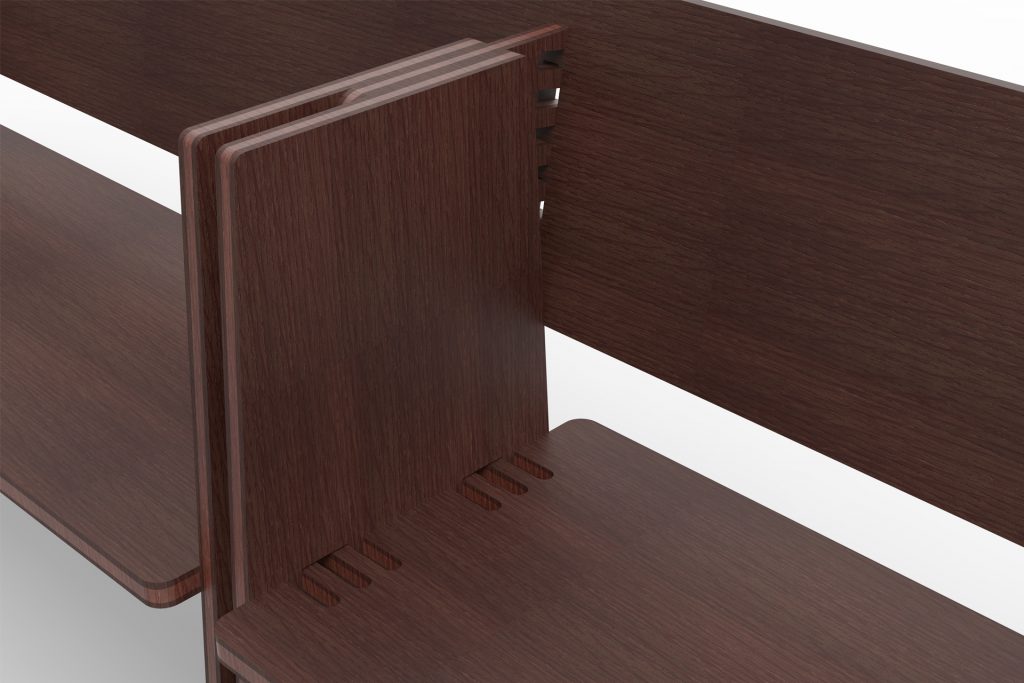
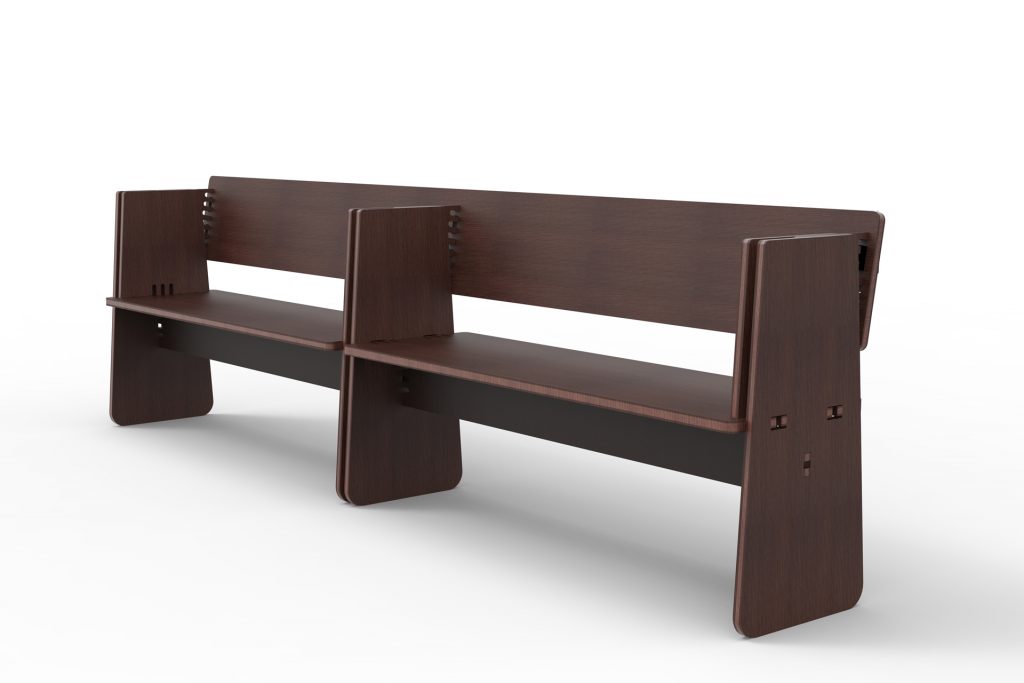
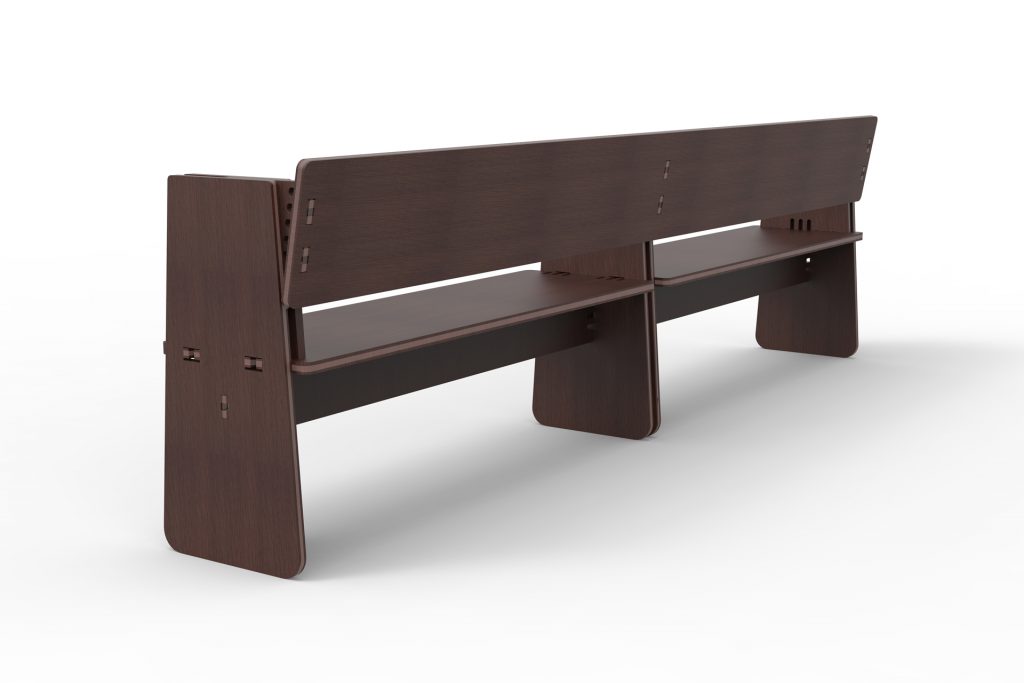
In all, 74 six-seat pews measuring 300 cm each and 4 four-seat pews measuring 200 cm each are created and placed in the nave and transepts of the cathedral, replacing the rush-seat chairs dating from 1912. They are designed to be easily dismantled and reassembled, enabling them to be moved or stored flat, thus reducing transport and storage space. Each bench, consisting of 14 planks and two wooden or metal pegs, can be assembled by two people in less than 15 minutes using a simple wooden mallet.
At the Canton’s request, the pews will also be fitted with reversible backs, providing added flexibility for events such as organ concerts, official ceremonies and religious services. The backs are attached to the armrests, and a wooden peg enables them to be shifted from one side to the other in a single movement, without the use of tools. Shock absorbers prevent the backrest from banging when reversed. The seat’s symmetry provides the same level of comfort regardless of which side is used, and the design makes the pews easy to maintain.
Working from the prototype developed by Yves Weinand and IBOIS, several woodworking companies responded to the call for tenders issued in January 2020. Bidders, complying with the specifications, used snap-fit joints in accordance with the instructions provided. The winner, GAB Manufacture SA, reworked the model in collaboration with designer Thierry Didot, producing a pew with an elegant, streamlined appearance.
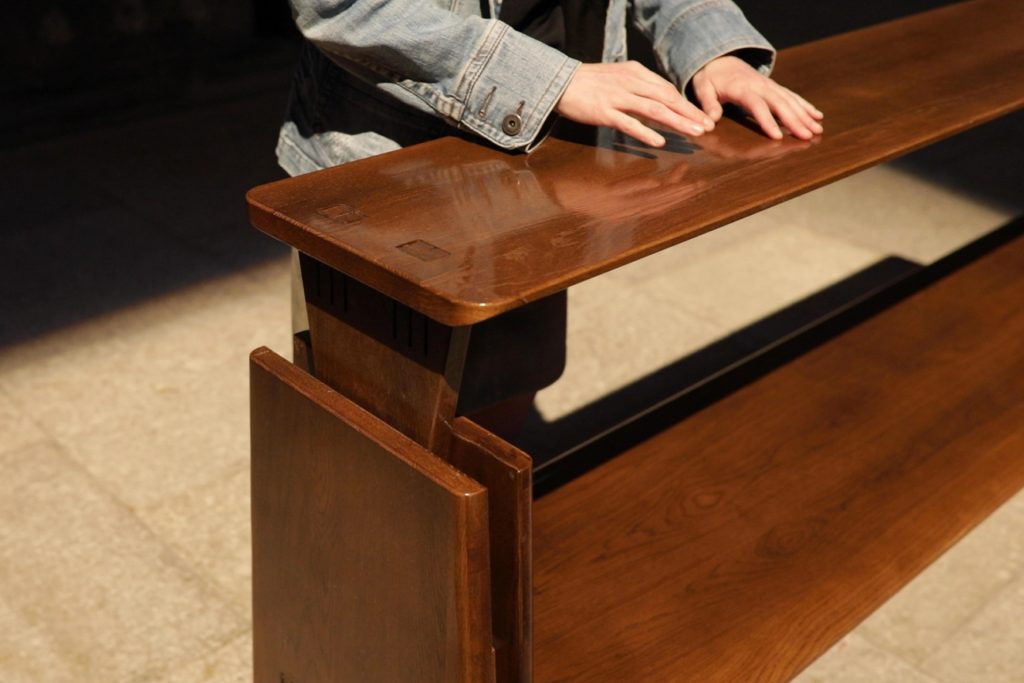
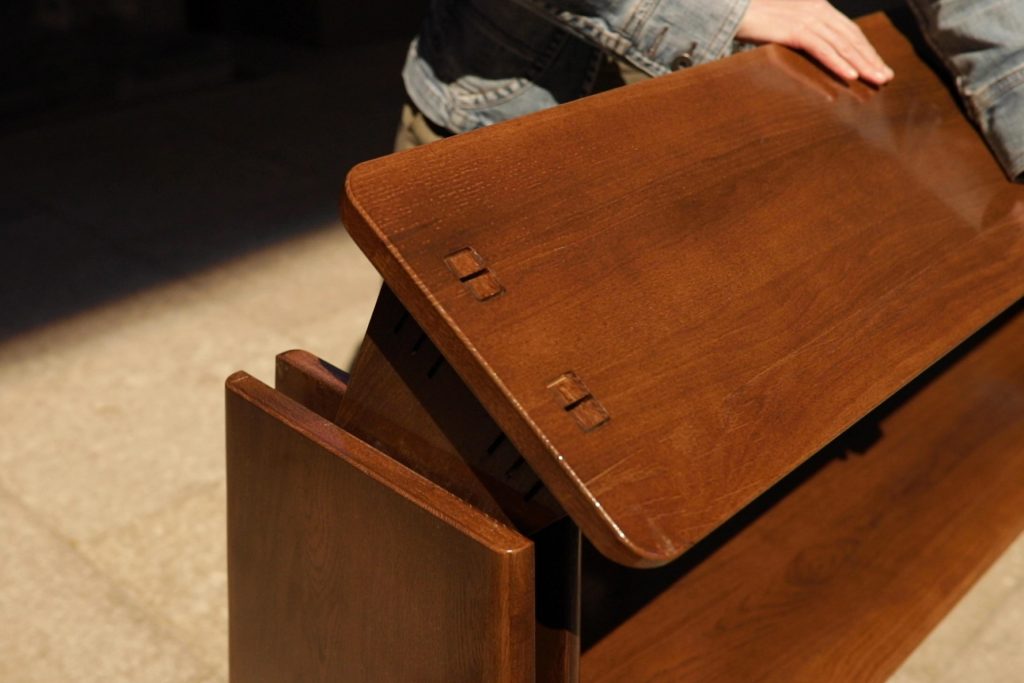
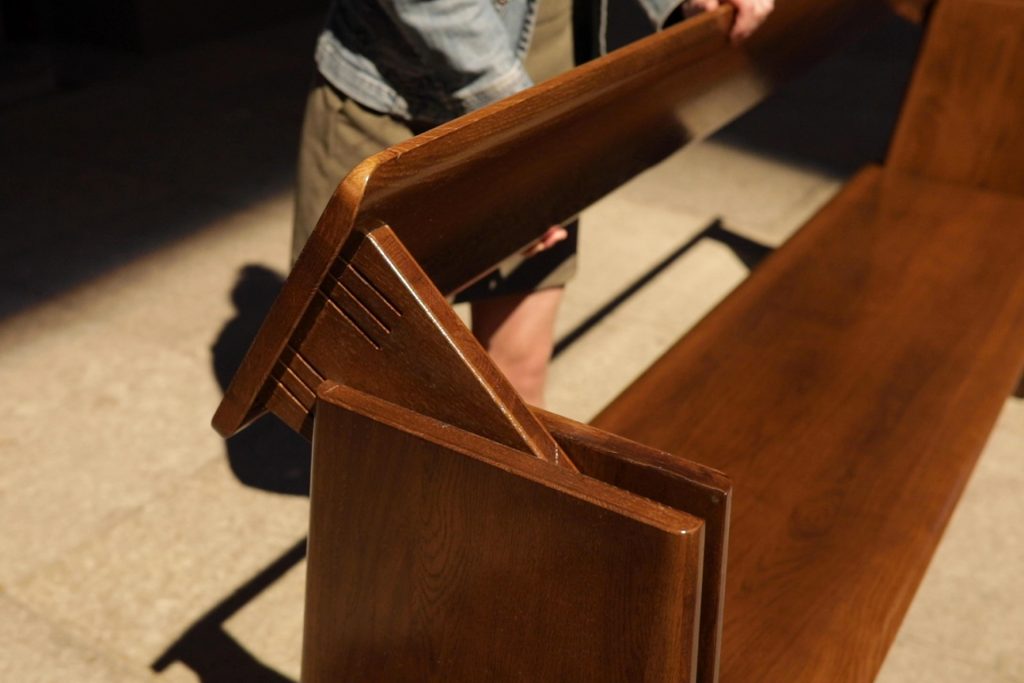
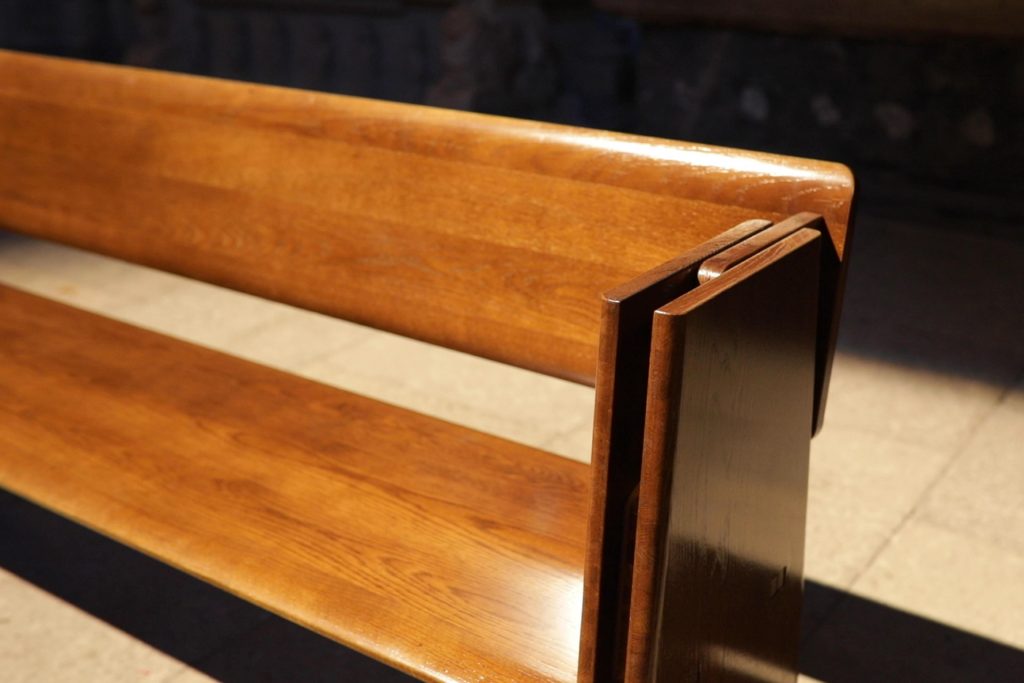
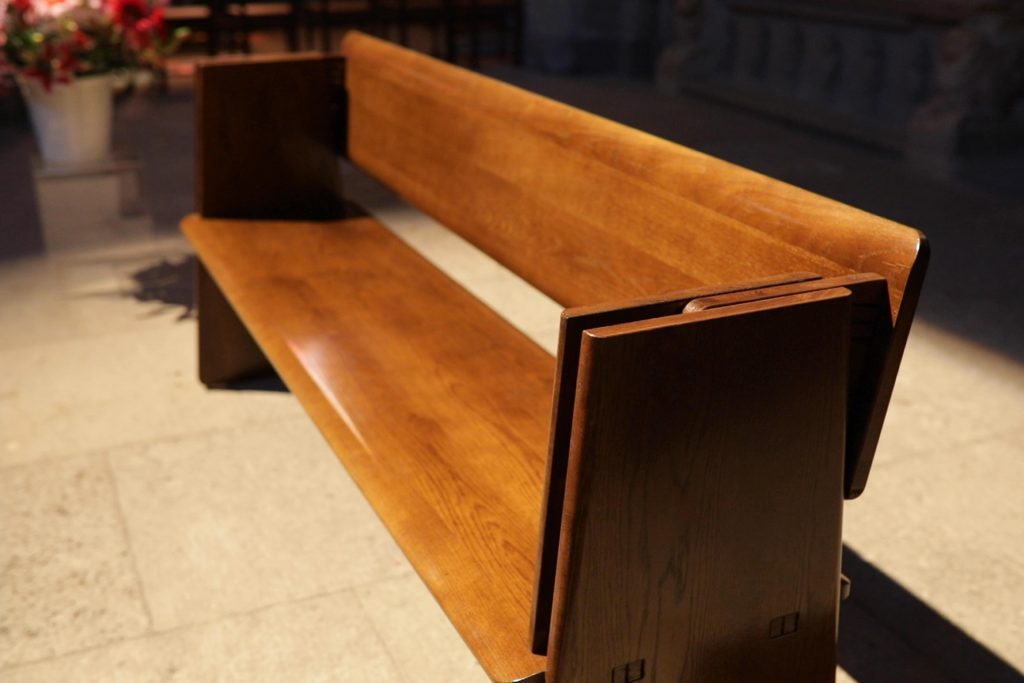
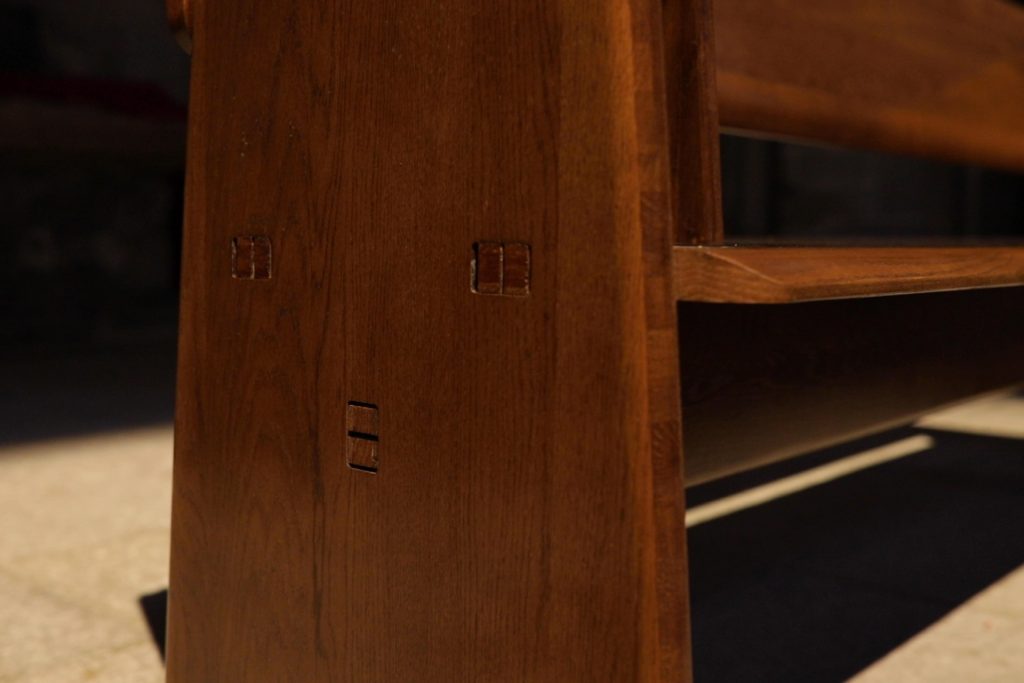
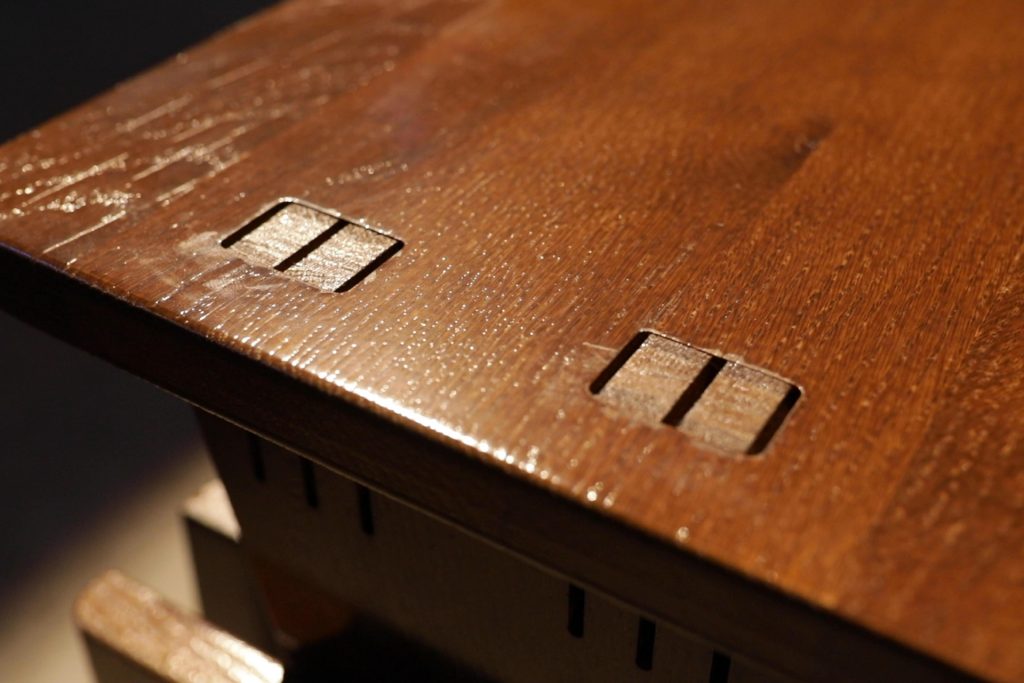
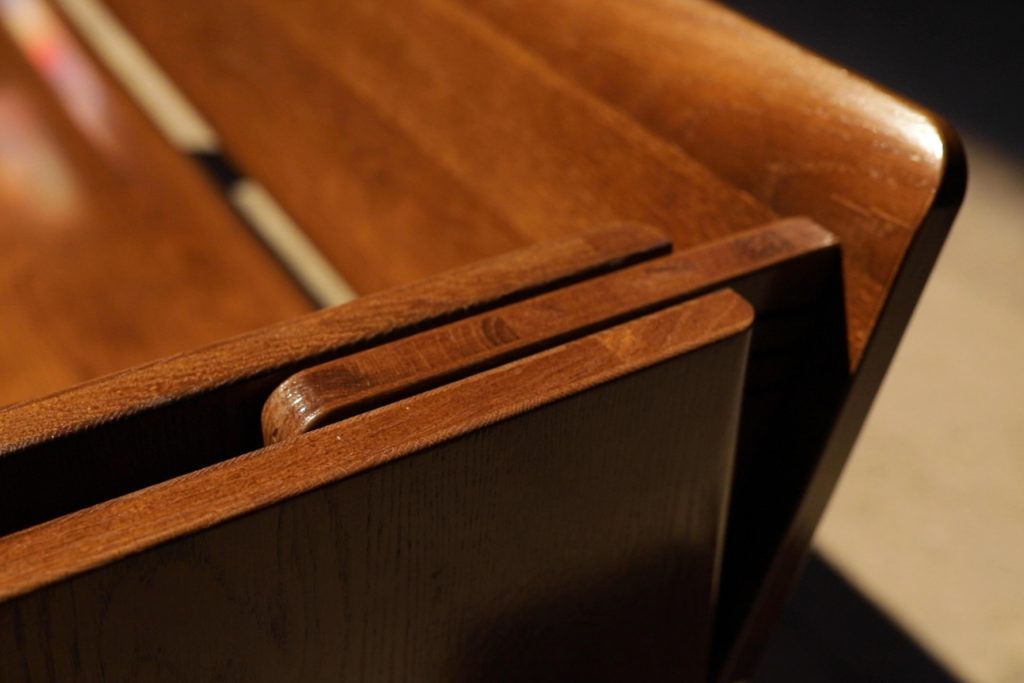
SCIENTIFIC PUBLICATION
Please note that the publication lists from Infoscience integrated into the EPFL website, lab or people pages are frozen following the launch of the new version of platform. The owners of these pages are invited to recreate their publication list from Infoscience. For any assistance, please consult the Infoscience help or contact support.
Snap-fit Joints – CNC fabricated, Integrated Mechanical Attachment for Structural Wood Panels
2014. ACADIA 2014: 34th Annual Conference of the Association for Computer Aided Design in Architecture, Los Angeles, California, USA, October 23-25, 2014. p. 189-198.PROJECT DATA
Location: Lausanne, Switwerland
Client: Canton de Vaud
Timber Company: GAB Manufacture SA
Project authors:
Yves Weinand Architectes, Lausanne
Thierry Didot Studio
Technological transfer: IBOIS EPFL, Prof. Yves Weinand, Martin Nakad, François Perrin
